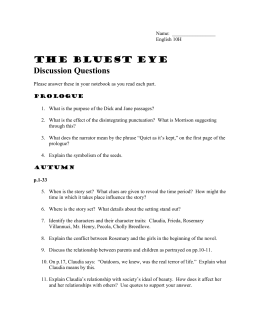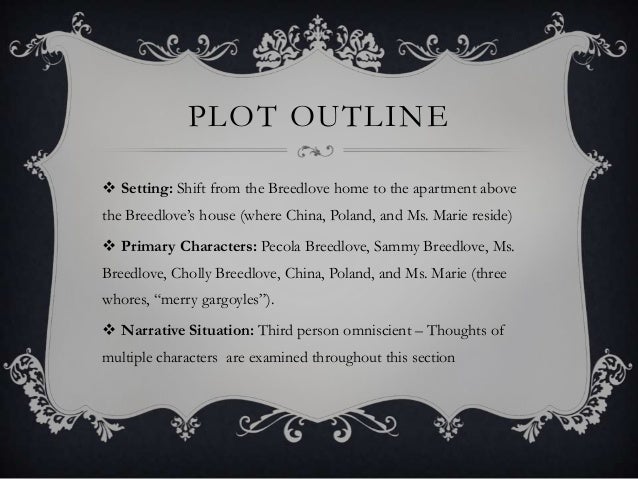

One example of this occurred when a group of boys made fun of her, saying, “She also knew that when one of the girls at school wanted to be particularly insulting to a boy, or wanted to get an immediate response from him, she could say. Pecola is taunted by the children at school and in the community on several occasions. This desire stems from the fact that blue eyes are the eyes of white person. Pecola is so accustomed to the racism that she faces every day, that she internalizes it, and develops a desire for blue eyes. It is present in her family, especially her parents, from school, and from society, where white children are considered to be “more important” than black children. Pecola Breedlove’s character is defined by several different types of racism. The character most affected by racism is Pecola Breedlove. The stereotype torments them mentally, and in some cases, to the point of insanity.

In this novel, characters begin to internalize the racism presented by these people, and feel inferior. In turn, blacks assign this status to other individuals within the lighter-skinned black community. Characters who are members of the black community are forced to accept their status as the “others”, or “outsiders”, which has been imposed on them by the white community. Racism in “The Bluest Eye” Several examples of racism are encompassed in The Bluest Eye by Toni Morrison.


 0 kommentar(er)
0 kommentar(er)
